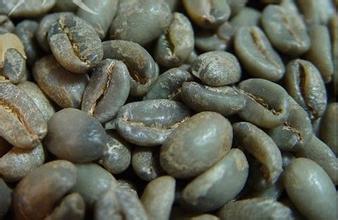Flavor description of Organic Coffee beans grown in Alpine catimor of Yunnan Province
Flavor description of Organic Coffee beans grown in Alpine catimor of Yunnan Province
Typica and Bourbon, two classic high-quality coffee varieties, are the main coffee varieties in Yunnan. In 1991, Katimo Catimor series varieties were introduced from Kenya (with stronger anti-virus ability and higher yield). A variety of Arabian species (also known as small seed species). Because the morphology and habits of the two varieties are similar, the two varieties are mostly mixed.
Tibica coffee, native to Ethiopia and southeastern Sudan, is the most widely cultivated variety of coffee in the Western Hemisphere. The plant is stronger, but not light-tolerant, and the yield is higher in Hawaii. The top leaf of Tibika is red and copper, which is called red top coffee.
Bourbon coffee is a variety of small-grain coffee second only to Tibica. At first, the main branch and the trunk grew upward at 45 degrees, and drooped with fruit load, the lateral branches were denser, the fruit was more, and the yield was higher. But the berries are smaller and ripen more slowly. The top bud of Bobang is green, which is called green top coffee.
Catimor is an improved variety of Tiebika, with 25% Robusta gene.
For decades, Yunnan has been a leader in domestic coffee cultivation. In 1955, Yunnan farmers introduced and planted coffee on the state-run Lujiang Farm and Hekou Farm, which was the starting point of Yunnan coffee after the founding of the people's Republic of China. Yunnan coffee producing area is located between 15 °north latitude and the Tropic of Cancer, and most areas are 1000-2000 meters above sea level. The topography is mainly mountainous and sloping, with large ups and downs, fertile soil, sufficient sunshine, rich rainfall and large temperature difference between day and night. These unique natural conditions form the particularity of Yunnan small-grain coffee taste, which is strong but not bitter, fragrant but not strong, and slightly fruity.
Over the decades, many botanists have studied the improvement of Kadim varieties, and dozens of new varieties have been cultivated. Colombia is the biggest harvester. In 1982, Kadim, which can be planted in the sun, was cultivated and named after the country "Colombia." Costa Rica claims that unlike ordinary kadim, [Colombia], which has been interbred for many generations, is now the two main varieties in the country with Kaddura, which has long replaced Tibica, which is weak, sickly and with low yield. However, most of the winners of Costa Rican [COE] are Kaddura, and [Colombia], who is of Robusta descent, rarely wins the prize. A large number of [Supermo] commercial beans exported by Costa Rica should be lower altitude [Colombia] or Kaddura, rather than the traditional Tibica, which is the main reason why the flavor of [Supermo] is getting poorer and poorer, but it is impossible for Costa Rica to reproduce the less productive Tibica.

Important Notice :
前街咖啡 FrontStreet Coffee has moved to new addredd:
FrontStreet Coffee Address: 315,Donghua East Road,GuangZhou
Tel:020 38364473
- Prev

Description of characteristics and Flavor of Panamanian Coffee introduction of varieties produced by grinding scale by taste treatment
Panamanian coffee characteristics, flavor description, grinding scale production area variety introduction Panama has been among the best coffee producers in the world since three years ago, which has surprised countries that have been in the vanguard of developer production for many years. Panamanian coffee is mainly produced in the west near the Costa Rican border, producing the best washed coffee. Compared with the middle and low seas
- Next

Esmeralda Estate Coffee Flavor Description Taste Treatment Variety Area Characteristics Introduction
Esmeralda Manor Rose Summer Coffee Flavor Description Taste Treatment Method Variety Production Area Characteristics Brief Introduction Boquet production area which is also distributed with many excellent estates, in addition to the famous Emerald Manor, there are Elida Manor, Akaba Manor and other well-known estates, all producing high-quality boutique coffee. This is not only due to the excellent ecological conditions in Panama's Poquet region and Pakistan.
Related
- Detailed explanation of Jadeite planting Land in Panamanian Jadeite Manor introduction to the grading system of Jadeite competitive bidding, Red bid, Green bid and Rose Summer
- Story of Coffee planting in Brenka region of Costa Rica Stonehenge Manor anaerobic heavy honey treatment of flavor mouth
- What's on the barrel of Blue Mountain Coffee beans?
- Can American coffee also pull flowers? How to use hot American style to pull out a good-looking pattern?
- Can you make a cold extract with coffee beans? What is the right proportion for cold-extracted coffee formula?
- Indonesian PWN Gold Mandrine Coffee Origin Features Flavor How to Chong? Mandolin coffee is American.
- A brief introduction to the flavor characteristics of Brazilian yellow bourbon coffee beans
- What is the effect of different water quality on the flavor of cold-extracted coffee? What kind of water is best for brewing coffee?
- Why do you think of Rose Summer whenever you mention Panamanian coffee?
- Introduction to the characteristics of authentic blue mountain coffee bean producing areas? What is the CIB Coffee Authority in Jamaica?

